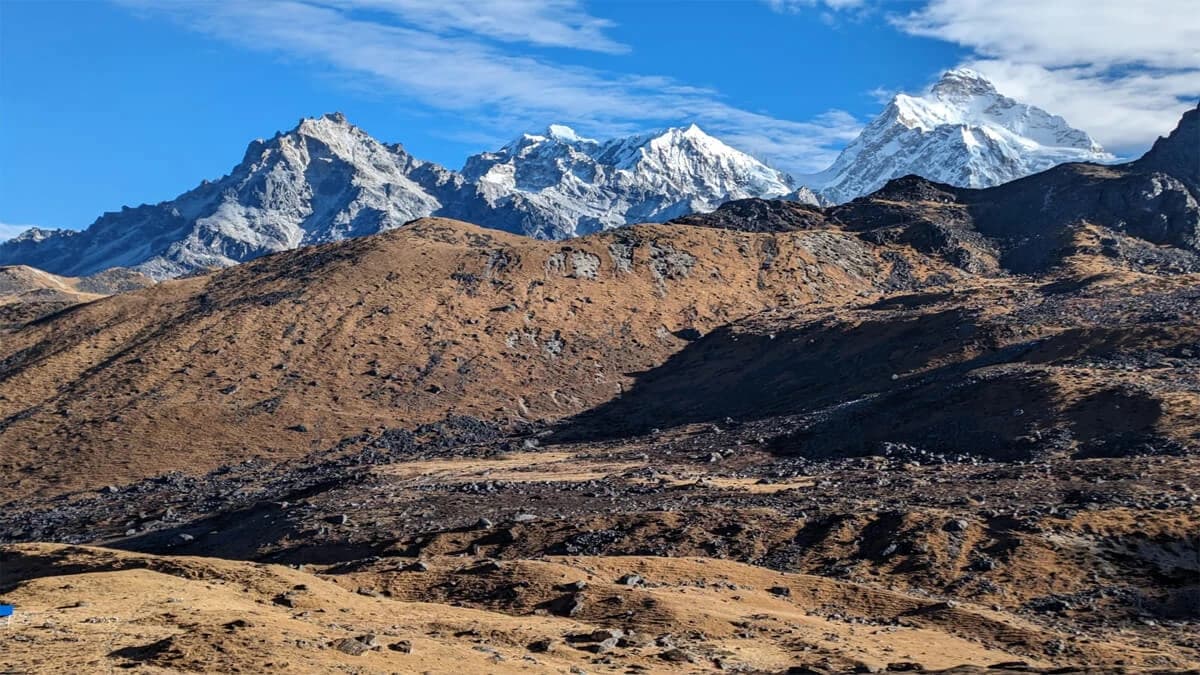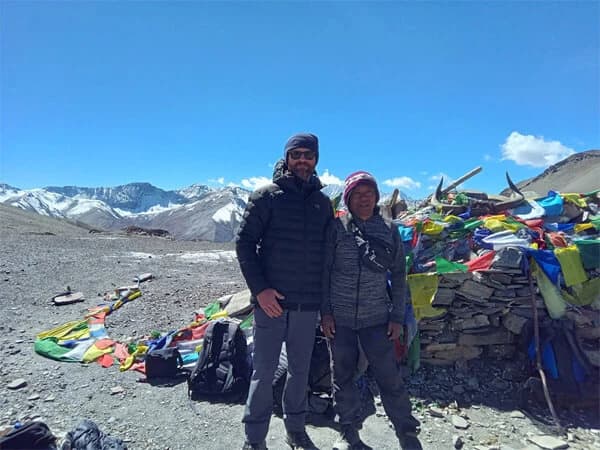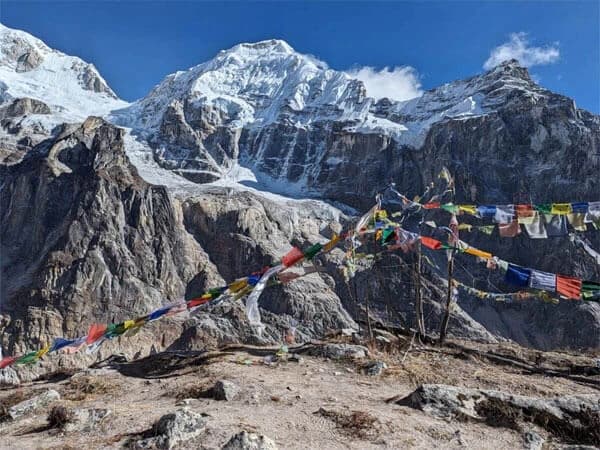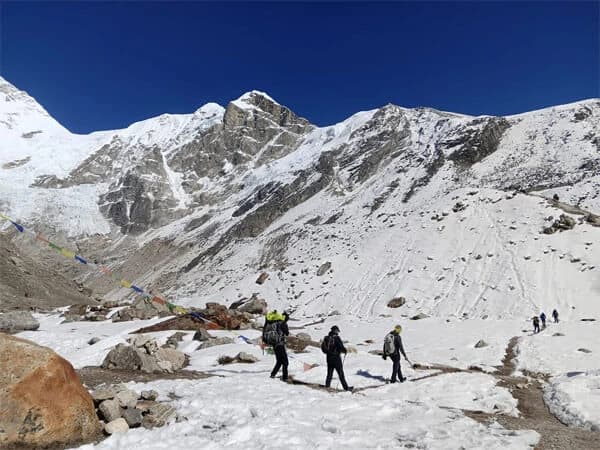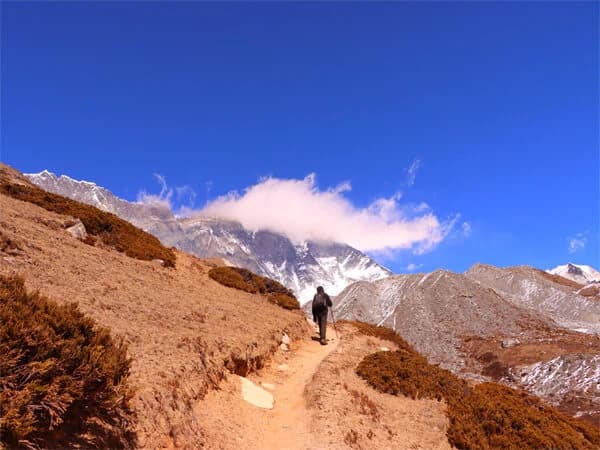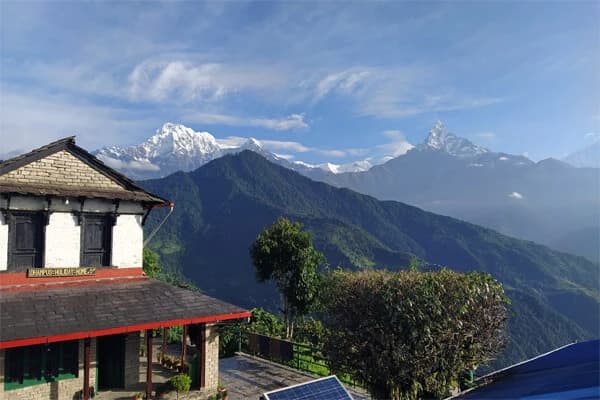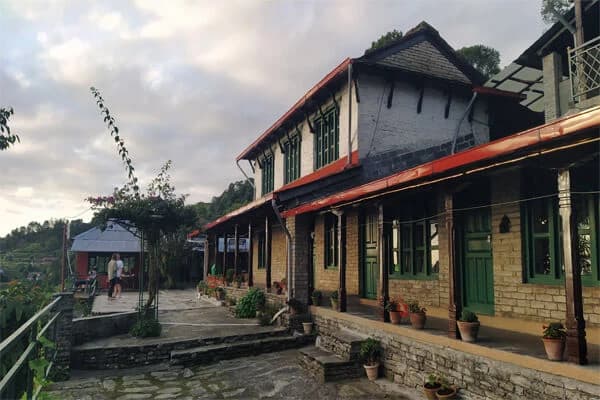Kanchenjunga base camp trek difficulty is consider as Moderate to difficult trek due it remot location, high altitude and long trekking duration. As per information that one of the major challenge for Kanchenjunga trek is isloate trail which requited an excellent stamina and endurance.
Many traveler wonder that how difficult is Kanchenjunga base camp trek? Kanchenjunga base camp trek difficulty depends on the various factor like trekkers experience, adaptability to high altitude,and traveleres fitness level.The Traveler who is looking for kanchenjunga trek need to have certain level of fitness required for several hour walk everyday and accents and decents.
Trekking trails including rockey paths, glacial moraines and rivers crossings adding the difficult of Kanchenjunga. During the trek, altitude sickness is a concer with gradual Kanchenjunga trek. So acclimatization being essential to avoide health issue for altitude.
The significant Kanchenjunga trek elevation gain also makes a journey challenging. As a remote Trekking in Nepal, there are lakes of Modern facilities, making proper preparation are crucial. So the best time for kanchenjunga base camp trek difficulty management is during the Spring and Autumn, When weather is stable.
How difficult is the Kanchenjunga base camp trek?
The Kanchenjunga Base Camp trek is one of the most adventurous, challenging, and exciting treks in Nepal. You will have to make your way through some of the treacherous landmarks in the region. Most of your trek is within the rural and remote areas of eastern Nepal, so the trek is more strenuous than other treks. The complete trek to Kanchenjunga Base Camp covers a distance of 220km which offers a fascinating experience.
The Kanchenjunga Base Camp trek is a challenging task as the trails are not in proper condition. The trek takes you around the world’s third-highest peakMount Kanchenjunga (8,586m) to both the South and North base camp. You can view a wide range of spectacular scenery, tropical jungles, culture, and traditional local villages.
The breathtaking views of the Kanchenjunga massif, remote villages, and high-altitude terrain are perfect for experienced trekkers looking for an epic adventure. While trekking to the 3 rd highest mountain in the world, located in eastern Nepal, you will traverse remote villages, through alpine forests, and navigate high-altitude terrains, all being rewarded with awe-inspiring vistas along the way.
Trekking to Kanchenjunga Base Camp in Nepal is a challenging adventure that takes you through remote villages, high-altitude terrain, and the bio-diverse Kanchenjunga Conservation Area. The trek offers a unique combination of cultural involvement, natural beauty, and stunning mountain views. The cultural aspect of this trek is special, as you get to interact with the local people and observe their way of life.
Kanchenjunga Region Trekking is at the starting point of the Great Himalayan Trail (1,700 km). The trekkers will be rewarded with the distinct biodiversity and culture of Eastern Nepal. You will also enjoy the breathtaking view of the Great Himalayas of the region. Kanchenjunga Conservation Area Project (KCAP) has been established to protect the endangered species of flora and fauna. While trekking along the less crowded routes, you might encounter animals like blue sheep, musk deer, and mountain bears.
The Kanchenjunga trek covers the two base camps: the Kanchenjunga North Base Camp and the Kanchenjunga South Base Camp. Most short-lived hikes only cover one base camp. The highest point during the Kanchenjunga north base camp trek is at Pang Pema, 5143 meters. Whereas the Kanchenjunga south base camp trek's highest point is 4500 meters. Various mountaineers and trekkers have rated the North Base Camp to be more difficult than the South Base Camp in terms of difficulty. Here is the complete guide on the Kanchenjunga Base Camp Trek.
Difficulty Factors in Kanchenjunga Base Camp Trek
Kanchenjunga Base camp trek difficulty is more than just defined by one aspect, several factors make Kanchenjunga Trek difficult. Factors like landscapes, time of year, and weather, impact the difficulty level of this trek. Similarly, your mental and physical conditions might also adversely impact your trip. Here are some of the lists that are responsible for making the Kanchenjunga Trek Difficult.
Elevation During the Kanchenjung Trekking
You will reach altitudes of nearly 5,000 meters on the Kanchenjunga trek, where the air is thin and the atmospheric pressure is low. As a result, your body may experience altitude sickness as you travel higher, resulting in headaches, nausea, and weariness. Hence, right acclimatization is crucial to prevent altitude sickness and other conditions associated with high altitudes.
While trekking in the Himalayas, many trekkers face altitude sickness as a common problem. The symptoms of altitude sickness include headache, nausea, vomiting, dizziness, and shortness of breath. To deal with altitude sickness, it’s essential to acclimatize properly and take it slow. If the symptoms worsen, it’s best to descend to lower altitudes or seek medical attention.
Weather in Kanchenjunga Trekking
Weather and temperature are the major factors in defining trek difficulty. Weather is unpredictable in the Kanchenjunga region due to its high-altitude location. Evening and daytime temperatures can differ significantly at higher altitudes, they can even fall below freezing. You might also experience snow, rain, hail, and strong winds, which can make your journey more difficult.

Spring and autumn seasons are the best time to trek around Kanchenjunga Base Camp. However, you must be well prepared, if you trek in off seasons like summer, monsoon, and winter.
Summer and monsoon seasons bring heavy rainfall in Nepal, together with the Himalayan region. Your trek can be hindered because of the rainfall. Also, natural disasters like landslides and stream floods occur during this season. Along with rainfall, there can also be hailstones and mudslides.
Similarly, the climate is frigid in winter, and the temperature drops below 0 degrees Celsius. It will make your experience very difficult in the Kanchenjunga area. During the winter, the wind is very sharp and the heavy snowfall can make you suffer from altitude sickness and injuries like frostbite and more. Moreover, the Himalayan region is likely to have avalanches in the winter season, which can cause a lot of disturbance and harm.
Terrain and Distance During Kanchenjunga Trekking
The Kanchenjunga base camp trek is one of the most extended treks in Nepal, full of rough hilly terrain with extensive lengths of uphill and downhill, narrow cliffs, crossing rivers and water streams. During the trek, you will have to cover a distance of 8- 12 km everyda. This includes walking for about an average of 6-7 hours a day.
The trek starts from the Taplejung, where the terrain is relatively flat, and gradually gains altitude as you move toward the high mountains. The first few days of the trek involve walking through lush forests and crossing small streams. However, the trail becomes more challenging as you climb higher, with steeper ascents. The most experienced trekkers can also get tired of trekking for more than three weeks. Hence, it is important to make sure you are physically prepared for the trek before you start.
Physical Fitness for Kanchenjunga Hiking
Physical fitness is the most significant part of the Kanchenjunga base camp Trek Difficulty. Whether in a group or solo, the trek demands a high level of physical fitness as it involves a lot of uphill and downhill walking, and the altitude gain can be quite significant. It can be risky if you have no energy and stamina left to move on to the base camp of Kanchenjunga.
Your trekking starts from Taplejung, and it will drain your body’s strength if you walk more than 6 hours daily. If this is your first time trekking, you might feel it is very complex, but with enough rest and acclimatization, you can continue the journey. To complete the trek, you must be in the best physical shape, stamina, and condition. You should take training in cardiovascular endurance, strength, and flexibility and have expertise in trekking at high altitudes.
Mental Attitude
The Kanchenjunga Base camp trekking is mentally challenging and needs a positive mindset. It might be tricky if you have a negative mindset regarding the Kanchenjunga Trek difficulty. The hurdles might set you apart from the successful trek. You should be aware that you should always push yourself ahead and carry a positive mindset, even in a distracting environment, so that you will reach the base camp of Kanchenjunga successfully. You should know the possible dangers and prepare as a result, making your trek convenient.
How to Overcome Kanchenjunga Base Camp Trekking Difficulty?
Kanchenjunga Trek is a challenging trek- trekkers must be very thoughtful and seriously prepared before embarking on this trek. Various factors are essential to overcome the difficulty of trekking. Some of the factors required to significantly reduce the difficulty of the Kanchenjunga trekking are as follows:
Acclimatization During the Kanchenjunga Base Camp Trek
The acclimatization process is one of the best ways to tackle altitude sickness in high-altitude regions. You will reach altitudes of nearly 5,000 m in the Kanchenjunga Base camp trek which can cause altitude sickness. Therefore, it is vital to take your time to acclimatize to the altitude by spending a few days at a lower altitude to let your body adjust to the lower oxygen levels.
You have to limit your daily ascents to 500 meters and having a day to rest every 1,000 meters is a must. Also, food rich in carbs, soup, and drinking plenty of water daily helps you perform better at high altitudes. One should also avoid alcohol and caffeine.
Kanchenjunga Trekking Training and Physical Fitness
The Kanchenjunga trek passes through the challenging, rugged terrains of the region which includes the uphill and downhill trails. Therefore, you should be in good physical shape and adequately prepared for the trek. Training before the trek can help you build strength and stamina, making the trek easier.
Choose the right season
The Kanchenjunga base camp trek difficulty also depends upon the time of the trek. It is important to choose the right season to trek to reduce the difficulties of the trek.
The Kanchenjunga region gets heavy snowfall during the winter season. Likewise, the heavy rainfall with hot and humid conditions in the summer and monsoon season, makes the trek more challenging. It is better to trek during the spring and autumn when the weather is dry and mild.
Trekking gear for Kanchenjunga Hiking
The Kanchenjunga trek is a long-duration trek that takes more than two weeks to complete. On the trail, you will not find places to buy anything if you forget to get that by yourself. So, before departure, create a list of essential items and avoid adding optional items that will only add unnecessary weight.
Trekking gears and equipment are essential to complete the Kanchenjunga Trekking successfully. You should pack a good pair of hiking boots, trekking poles, backpacks, sleeping bags, and headlamps.

Since the weather is mostly cold during all times of the year, your clothing should also be weather-friendly. We insist trekkers carry thermal clothing (inner and outer), windproof/waterproof layers, jackets, trekking pants, hats, gloves, and warm socks.
Having a first aid kit is necessary for any injuries or illnesses. Besides that, you also need to carry personal hygiene kits for the safety of your body. Items like wet wipes, sanitizers, sunscreen, insect repellent, oxygen supplements, and essential medicines are necessary for the trek.
Hire an Experienced Trekking Guide
An experienced guide can make a huge difference in lessening the trek’s difficulty. The local guide has good knowledge of the area and the Kanchenjunga trekking routes. These will safeguard you from any mishaps and injuries you may experience on the trail. A guide can also assist you with language, cultural understanding, and local expertise.
Choose Comfortable accommodations
There are quite a few lodges and tea houses along the Kanchenjunga trek route that offer basic accommodations. However, opting for more comfortable accommodations with better facilities, such as hot showers and comfortable beds, can help you rest better, reducing the physical strain on your body.
Communication Skills
Communication skills are very important in overcoming difficulties. During the Kanchenjunga Trek, you must communicate with the local people on various occasions. Also, communication is very important if you are participating in cross-cultural activities in the villages.
Besides that, strong communication is a must if you are a solo trekker with only a guide throughout the trek. You can interact easily with the locals and other trekkers on the way. You may have to be open and respect the cultures of local villages and communities like Sherpas and Limbus.
Recommendation on Kanchenjunga Base Camp Trek Difficulty
It is safe to trek to Kanchenjunga Base Camp you can trek around the base camp at the third-highest peak in the world without any fear. There have been no natural disasters recorded lately. With adequate knowledge of challenges and difficulties, I hope you may be motivated to trek. You can get help and assistance while trekking by hiring an experienced trekking guide. You can gather all the required information about Kanchenjunga by visiting or contacting a reliable trekking agency, Nepal Trekking Routes.
Conclusion: Kanchenjunga Base Camp Trek Difficulty
Kanchenjunga Base Camp Trek is an adventurous trek in Nepal despite being one of the most challenging ones. As mentioned above, the Kanchenjunga Trek Difficulty is challenging as it includes steep landscapes, dense forests, and glacial rivers in its way. Despite its difficulty, Kanchenjunga Trek offers stunning views of the world’s third-highest peak and the surrounding places.
The Kanchenjunga Trekking is a challenging but worthwhile journey that provides breathtaking landscapes and the chance to explore the remote areas of North Eastern Nepal. The difficulty level of the trek is high, but even beginners may take on the challenge. You will be crossing across all kinds of landscapes, including rocky terrain, but with careful planning and proper preparation, you can complete it successfully.

